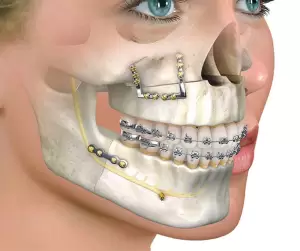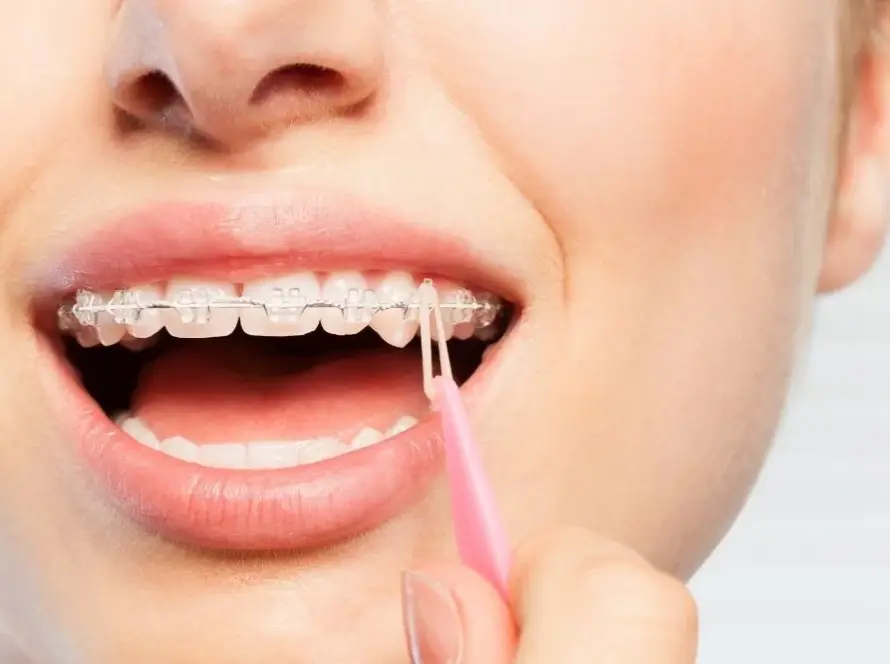Orthognathic Surgery: What You Need to Know About Jaw Correction Surgery
Orthognathic surgery is a surgical procedure performed to correct congenital or acquired structural defects in the jaw and facial bones. This surgical procedure, which is applied to ensure harmonious alignment of the teeth and jaw, provides both aesthetic and functional improvement. In this article, we will discuss in detail who is suitable for orthognathic surgery, the surgical process, recovery time and all other curious issues.
What is Orthognathic Surgery?
Orthognathic surgery is an operation performed to position the jaws and facial bones in relation to each other and to improve the chewing function of the jaw. Some jaw deformities may be congenital, while others may develop during bone development or as a result of trauma. It is important to note that surgery is only one component of the overall treatment process. In many cases, orthodontic treatment is also necessary, which involves the movement and correction of the teeth. This orthodontic intervention can usually take place before or after the surgical procedure.
 Who is Orthognathic Surgery Suitable for?
Who is Orthognathic Surgery Suitable for?
This surgical intervention is suitable for patients with the following conditions:
- Jaw closure disorders (over close, open close, cross close)
- The lower or upper jaw is too far forward or backward
- Facial asymmetry
- Speech and chewing problems
- Sleep apnoea (respiratory problems due to narrowing of the airway)
- Chronic pain and discomfort in the jaw joint (TMJ)
Orthognathic Surgery and Psychological Effects
Orthognathic surgery can create great changes for patients not only in terms of physical health but also psychologically and emotionally. Irregularities in the jaw and facial structure can negatively affect the individual's self-confidence and cause anxiety in social life. The changes experienced in the postoperative period can affect the psychology of patients in the following ways:
- Increased Self-Confidence: Patients feel more aesthetic as their facial features become more balanced and their jaw structure improves. This increases their self-confidence and makes them more comfortable in social life.
- Reduction of Social Anxiety: Concerns about facial aesthetics can lead to social anxiety in some individuals. When the jaw structure improves after surgery, individuals feel more comfortable and can be more active in social environments.
- The Link with Depression and Anxiety: In individuals who experience unhappiness due to facial and jaw disorders, it can be observed that depressive feelings and anxiety decrease with postoperative improvement. However, some patients may have difficulty in adjusting to the postoperative change.
- The Need for Patience in the Healing Process: Due to postoperative swelling, pain and temporary changes in facial appearance, some patients may feel anxiety during the recovery process. Psychological support may be useful in this process.
- Adaptation to the New Look: After orthognathic surgery, significant changes occur in facial features. It may take time to get used to this change and some patients may feel different when they look in the mirror. However, over time, the brain gets used to the new facial structure and patients begin to welcome this change positively.
In order to manage the psychological process in the best way, it may be useful to get professional support before and after surgery, to participate in postoperative support groups or to communicate with people who have already experienced this process. In addition, giving yourself time and being patient after surgery will facilitate the process of getting used to your new appearance.
Orthodontic Treatment and Transparent Aligners 
Before or after orthognathic surgery, orthodontic treatment can be applied to ensure the correct alignment of the teeth. In addition to traditional metal brackets, this treatment process can also be managed with transparent aligners. Clear aligners are an ideal alternative, especially for patients with aesthetic concerns. The aligners can be easily removed while eating and brushing teeth, making oral hygiene more comfortable. However, in some patients requiring orthognathic surgery, clear aligners may not provide sufficient stability. Therefore, the treatment plan should be determined by the joint evaluation of the orthodontist and maxillofacial surgeon.
The Role of the Patient in the Treatment Process
The preparation of patients planned for orthognathic surgery for surgery, the surgical stage and the processes afterwards require a certain amount of time. It is important to stick to this process before starting the whole treatment process. You need to know each stage of your treatment plan and have a good understanding of what to expect at all stages. You should actively participate in the process by asking questions and getting the necessary information to understand the benefits and risks.
Your Treatment Team
The orthognathic surgery process is carried out by a team from different specialities:
- Oral and Maxillofacial Surgeon: Performs surgical procedures on the jaw and facial bones.
- Orthodontist Working in close co-operation with the surgeon, it regulates the movement and alignment of the teeth.
- General Dentist and Other Specialists: Provides support in other issues related to dental health.
- Other Professionals: Speech therapists, physiotherapists or other healthcare providers can optimise your treatment.
Frequently Asked Questions
- Is the operation painful?
It is normal to feel pain after orthognathic surgery, but this pain can usually be controlled with painkillers. The pain, which is more intense in the first few days, decreases over time and eases as the healing process progresses. Swelling and muscle stiffness may also occur, but cold compresses and medications recommended by the doctor help to alleviate these effects.
- Will it leave a scar?
Orthognathic surgery is usually performed through incisions made through the mouth, so there is no scar on your face that is visible from the outside. In very rare cases, there may be minimal scars if additional surgical procedures are required, but such scars fade over time.
- Will my ability to speak or eat be affected?
During the first few weeks after surgery, the ability to speak and eat may be temporarily affected. Due to limited jaw movements, patients should be fed a liquid and soft diet in the first phase. Speech may initially become a little difficult, but most patients return to normal within a few weeks. Recommended exercises to strengthen the jaw muscles will be of great benefit during the recovery process.
- Is orthognathic surgery a permanent solution?
Yes, orthognathic surgery performed correctly is a permanent solution. However, the patient should complete orthodontic treatment in the postoperative period and regularly perform exercises to strengthen the jaw muscles. In addition, retention (reinforcement) appliances can be used to maintain the alignment of the teeth.
- How long does the swelling last after the operation?
Swelling peaks in the first 48 hours after surgery and usually subsides significantly within 2-3 weeks. However, it may take several months to go down completely. Ice compresses and sleeping with the head elevated can help the swelling go down faster.
- Can people undergoing orthodontic treatment with clear aligners undergo surgery?
Yes, some patients can use transparent aligners during orthodontic treatment and can be included in the surgical plan. However, whether it is suitable for each patient depends on the condition of the jaw structure. Clear aligners are usually used in patients correcting mild to moderate orthodontic problems. For patients with more severe jaw disorders, traditional brackets may be more appropriate.
- How should attention be paid to oral hygiene after orthognathic surgery?
It is important to pay extra attention to oral hygiene in the postoperative period. Brushing your teeth can be difficult, so you should use antiseptic mouthwash solutions recommended by your surgeon. Baby toothbrushes or soft-tipped brushes allow you to clean without damaging the operated areas. It may also be necessary to stop flossing for a certain period of time.
Conclusion
Orthognathic surgery is a permanent solution that provides both aesthetic and functional improvement by correcting jaw closure disorders and facial asymmetry. If you think that you have an irregularity in your jaw structure and wonder whether this surgery is suitable for you, you can get detailed information by contacting a maxillofacial surgeon. In the long term, successful results can be achieved by following regular postoperative controls and recommendations.
For More Information:
- What is Orthognathic Surgery?
- Orthodontic Treatment and Transparent Aligners
- Recovery Process After Jaw Surgery
- Psychological Effects of Orthognathic Surgery
- Sleep Apnoea and Jaw Surgery




